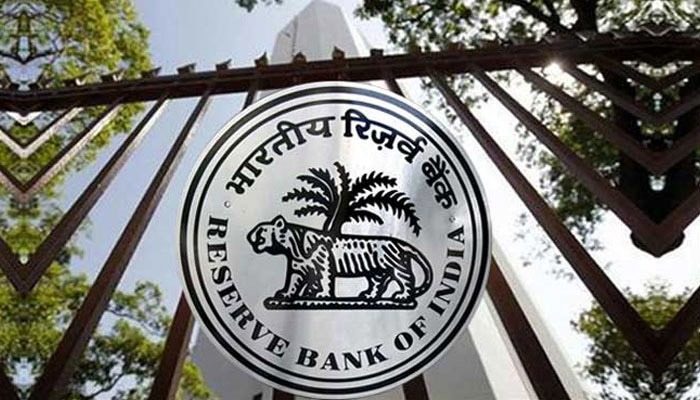The Reserve Bank of India’s (RBI’s) rate-setting panel, the Monetary Policy Committee (MPC), on February 8, 2024, decided to maintain the status quo on both policy rate and stance with a majority of five to one.
This way, the repo rate was kept unchanged at 6.5% and the stance of focussed on ‘withdrawal of accommodation to ensure that inflation progressively aligns with the target, while supporting growth’ was retained.
As a result, Standing Deposit Facility (SDF), Marginal Standing Facility (MSF) and Cash Reserve Ratio (CRR) rates were also kept unchanged at 6.25%, 6.75% and 4.5%, respectively. However, one of the external MPC members voted for a reduction in the repo rate by 25 basis points (bps) and changing the stance to neutral.
Growth factor: The present state of global economic activity across major economies introduces a varied landscape. The odds of a soft landing have risen with steady overall growth and inflation easing, while geopolitical risks have increased.
The RBI noted that elevated public debt levels in a high-interest rate environment pose a pertinent risk to global financial stability. In India, growth has been relatively strong, highlighted by robust manufacturing and services purchasing managers’ index (PMI), healthy construction activity, a resilient external sector and a buoyant services sector witnessing a surge based on domestic and global demand.
The outlook is on a positive note, with the central bank anticipating a 7% Gross Domestic Product (GDP) growth in FY25 driven by resilient services and urban consumption. The positive trajectory is further fuelled by signs of rural recovery strengthened by allied activities. In addition, the rise in residential housing, government focus on capital expenditure and robust corporate profitability abode well for the investment outlook.
Inflation factor: The Consumer Price Index (CPI) has moderated in the FYTD24, supported by broad-based easing in core CPI and fuel inflation. Food prices, especially vegetables, continue to remain volatile and keep headline inflation high. The CPI forecast is unclear due to substantial uncertainty, primarily stemming from the risk of disruptions in the supply chain and the potential price effects of the ongoing geopolitical crisis. In addition, food prices remain vulnerable to weather-related scenarios.
While the apex bank kept its average inflation forecast for FY24 unchanged at 5.4%, it adjusted its estimate for the fourth quarter Q4FY24 downwards by 20 bps to 5%. The RBI anticipates CPI to witness a dip to an average of 4.5% in FY25, contingent upon the expectation of a normal monsoon season.
The road map ahead: Although the status quo policy rate was largely expected, no announcements to improve liquidity were made, which was a marginally negative surprise to the market.
The central bank highlighted that it would continue actively modulating frictional and durable liquidity via an appropriate mix of instruments. Furthermore, the RBI emphasised the endeavour to achieve an inflation target of 4% on a durable basis and highlighted that rate transmission is still incomplete.
All in all, the monetary policy was perceived as marginally hawkish and led to yields rising slightly.
Despite the policy decision, experts anticipate the outlook for fixed-income markets remains favourable over the medium term based on the following key drivers:
- The lower-than-expected market borrowings and the likelihood of robust government securities (G-Secs) demand due to India’s inclusion in the JP Morgan bond index – are likely to keep demand-supply favourable in FY25. The government’s commitment to fiscal consolidation in FY26 may provide more confidence.
- The core CPI momentum remains subdued, driven by lower input price pressure and benign global commodity prices. Furthermore, headline CPI may ease, and Inflation expectations also remain well anchored.
- Major central banks across the globe, especially the US Fed, have indicated the end of the rate hiking cycle and are likely to start easing in due course. The RBI is also expected to reduce the policy rate eventually in the coming quarters.
- India’s external sector vulnerability remains low due to high foreign exchange reserves, rangebound oil prices, robust service exports, and the likelihood of Foreign Portfolio Investors (FPI) inflows into the debt markets in FY25.
A look at key risk factors:
- The statutory liquidity ratio (SLR) holdings of the banking system are high, and credit growth is robust. With interbank liquidity in deficit, the incremental demand for G-Secs is likely to remain muted.
- The RBI’s policy rate can remain higher than expected due to multiple reasons, including food price shocks keeping headline CPI elevated, rise in commodity prices due to escalation in the geopolitical crisis, and monetary policy globally remaining tight for a period longer than expected, among others.
Finally, it is anticipated that yields are likely to trade with a downward bias, and the long end of the yield curve is likely to outperform over the medium term. As a result, as highlighted in the past, for investors with a relatively longer investment horizon, it is a positive phase to increase allocation to longer-duration funds in line with individual risk appetite.
Furthermore, given a flat yield curve and elevated short-term rates along with expectations of rate cuts in the coming year, one may also consider investment in short to medium-duration debt funds.

Rajiv is an independent editorial consultant for the last decade. Prior to this, he worked as a full-time journalist associated with various prominent print media houses. In his spare time, he loves to paint on canvas.





